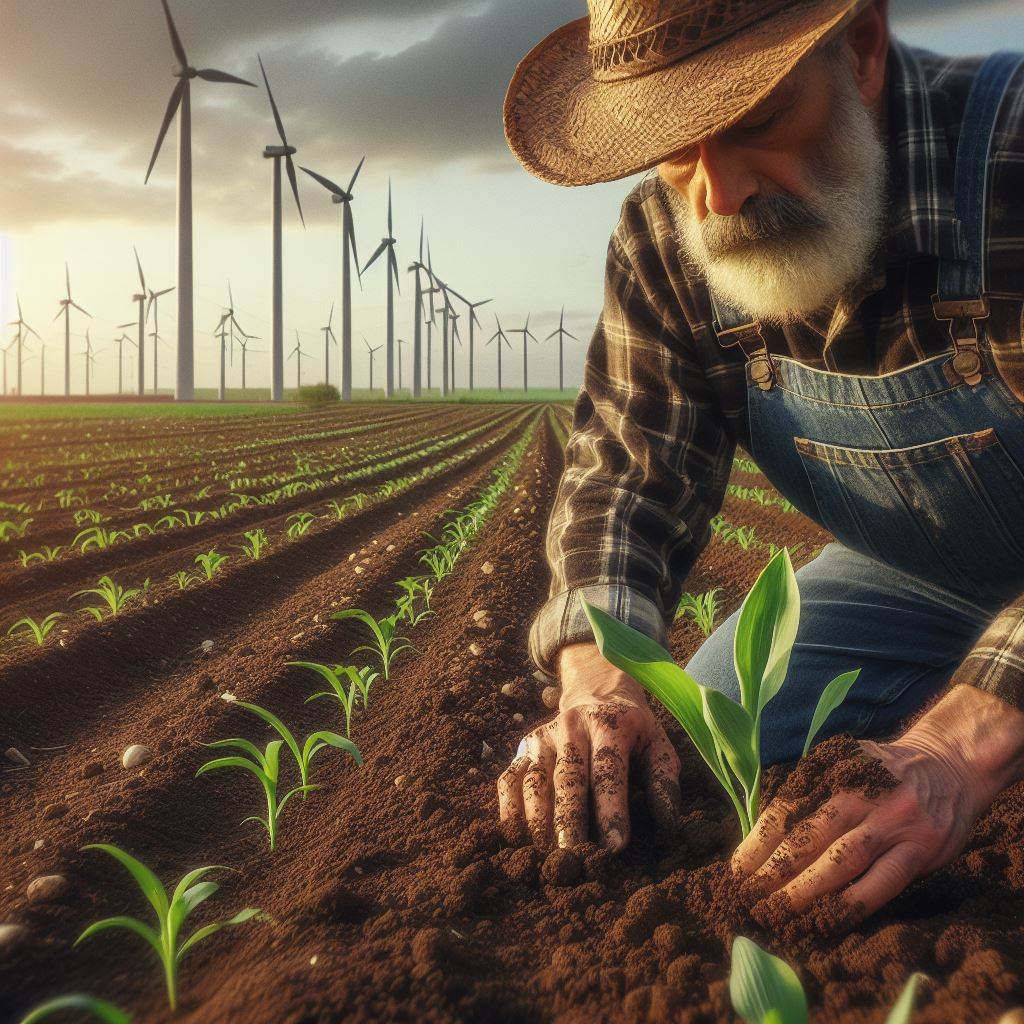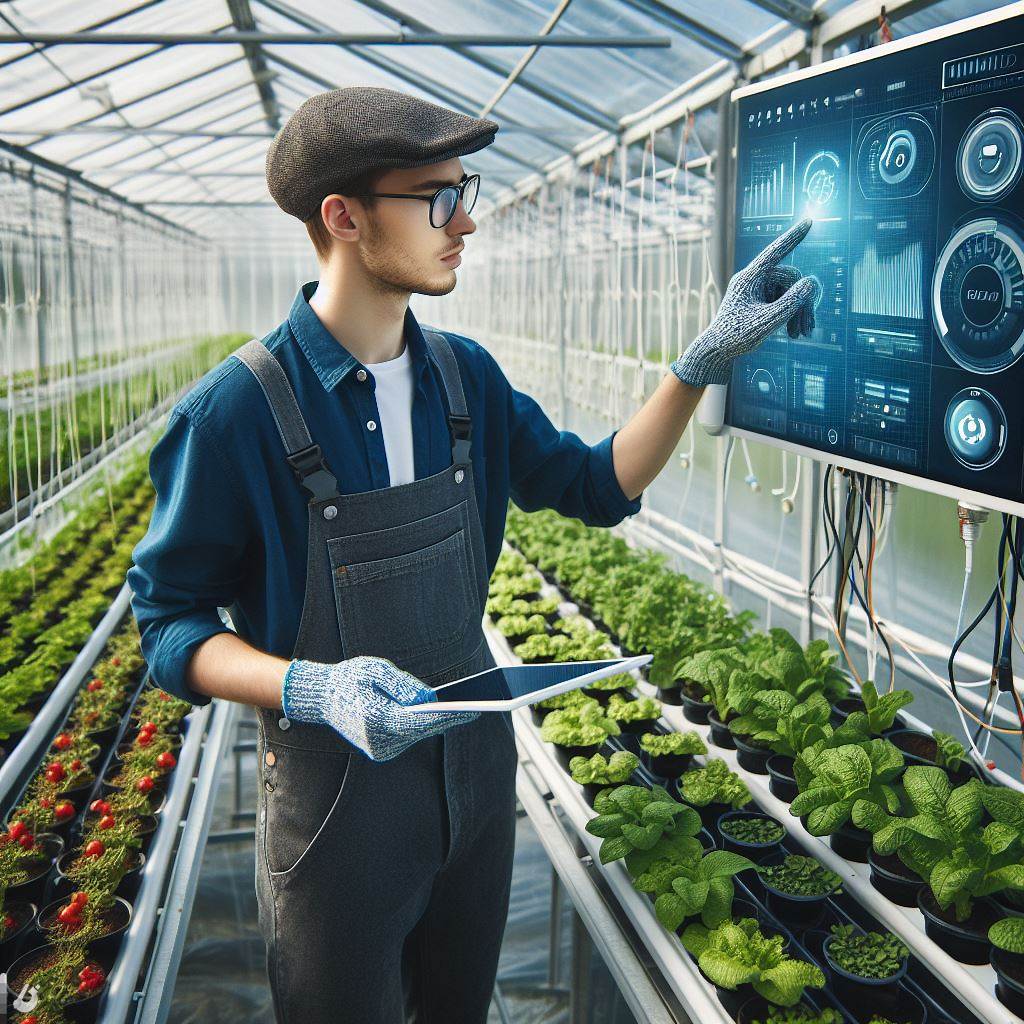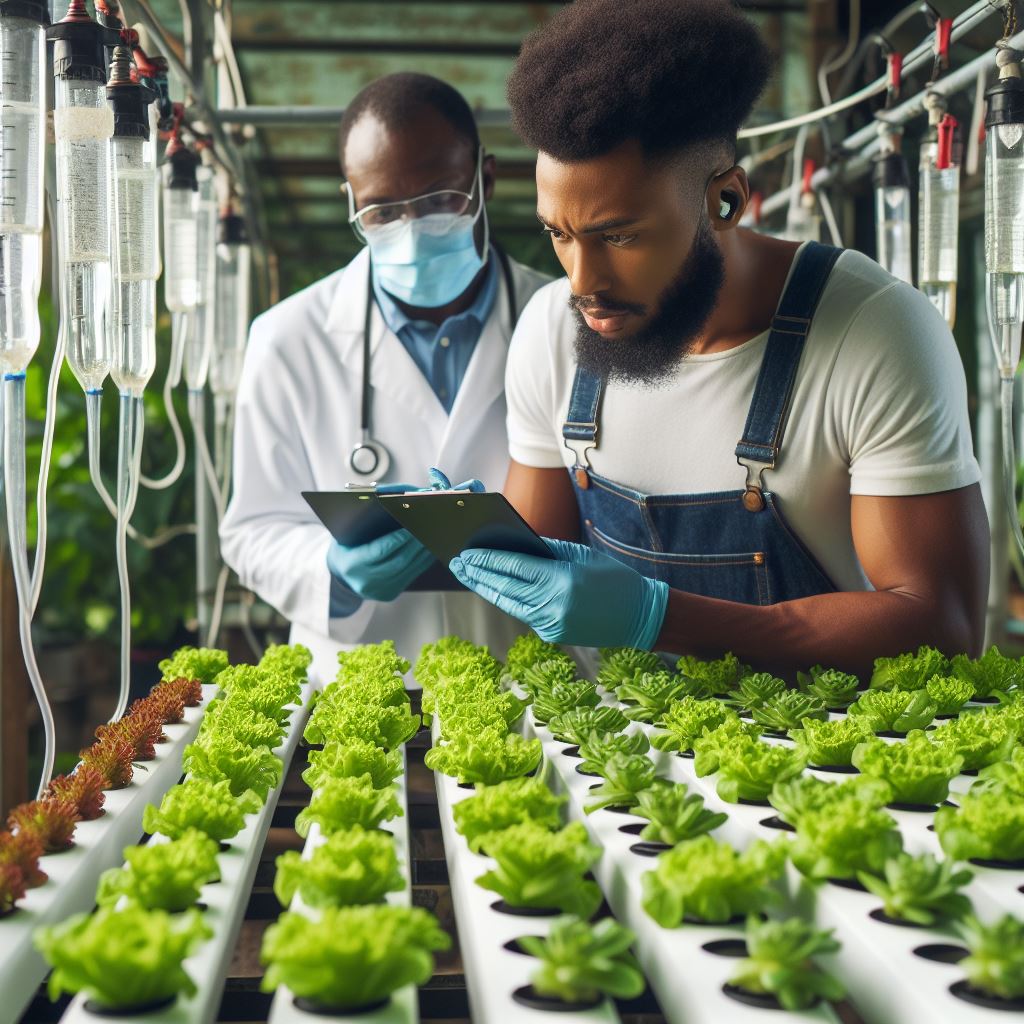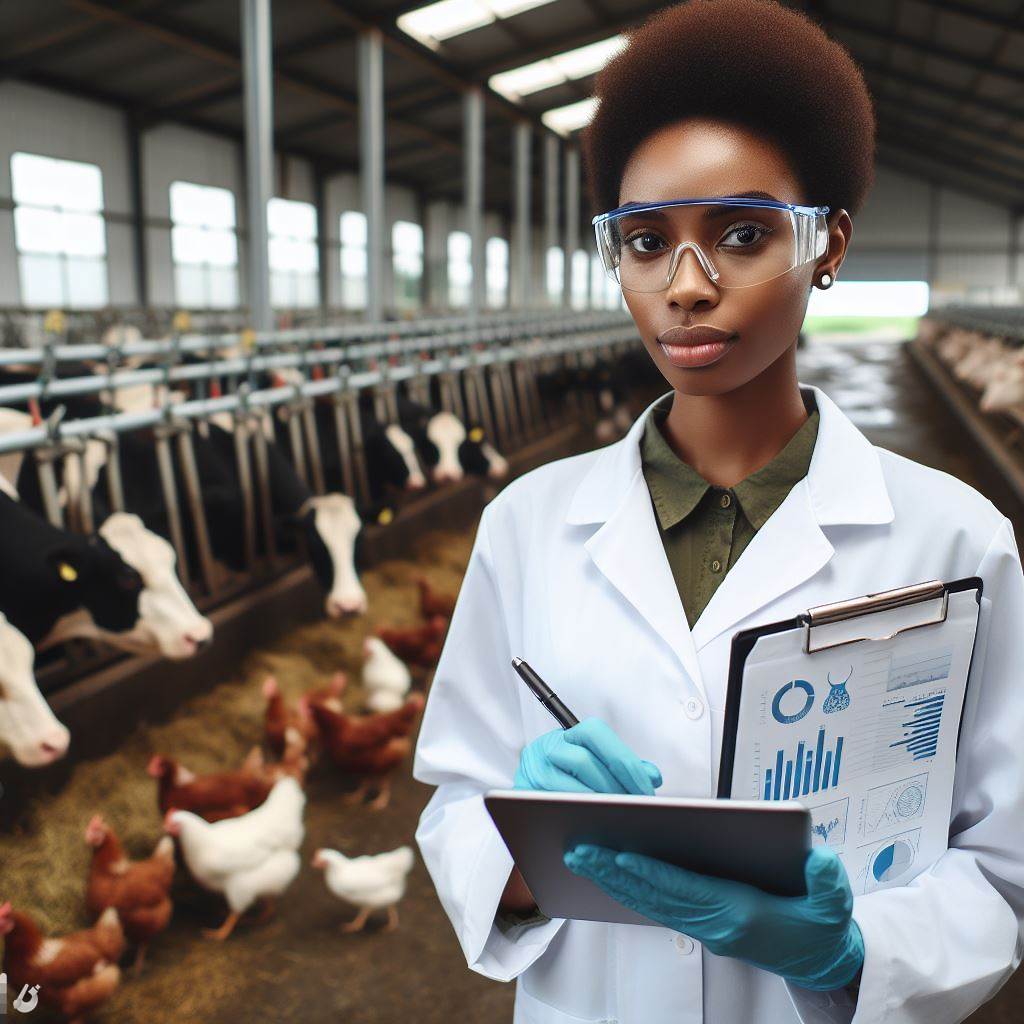Introduction
Importance of sustainable practices in modern farming
Sustainable practices in modern farming are of utmost importance in today’s world.
With growing concerns over environmental degradation and the need to feed a rapidly expanding global population, it is essential that farmers adopt sustainable practices to ensure the long-term viability of agriculture.
Definition of sustainable farming
Sustainable farming can be defined as a method of agricultural production that focuses on meeting present needs without compromising the ability of future generations to meet their own needs.
It involves the careful management of natural resources, biodiversity conservation, and the protection of ecosystems to maintain agricultural productivity over time.
Thesis statement
By adopting sustainable practices, modern farmers play a crucial role in ensuring a sustainable future for agriculture.
They employ techniques such as organic farming, crop rotation, and integrated pest management to minimize the use of synthetic fertilizers and pesticides, reducing potentially harmful impacts on the environment and human health.
Furthermore, sustainable practices promote soil health and fertility, minimizing soil erosion and degradation.
They also preserve water resources through efficient irrigation techniques and promote biodiversity by creating habitats for beneficial animals and insects.
Basically, sustainable practices in modern farming are vital for preserving the environment, safeguarding human health, and ensuring food security for future generations.
By implementing these practices, farmers contribute to a sustainable future for agriculture, paving the way for a more resilient and thriving planet.
Conservation Tillage
Definition and explanation of conservation tillage
Conservation tillage is a farming practice that involves minimizing soil disturbance during the planting and growing process.
It aims to protect the soil’s structure and fertility while reducing the negative impacts of agriculture on the environment.
Instead of fully tilling the soil, farmers leave crop residue on the field and disturb the soil as little as possible.
Benefits of conservation tillage
Reduced soil erosion
Conservation tillage helps prevent soil erosion, a major problem in traditional farming methods.
By leaving crop residue on the field, the soil is protected from wind and water erosion, allowing it to retain its structure and nutrients.
Transform Your Agribusiness
Unlock your farm's potential with expert advice tailored to your needs. Get actionable steps that drive real results.
Get StartedThis helps maintain the long-term productivity of the land.
Improved water retention
When soil is tilled excessively, it becomes more compacted, leading to decreased water infiltration and increased runoff.
Conservation tillage practices reduce soil compaction and increase water retention, allowing crops to better access water during dry periods.
This helps conserve water resources and ensures sustainable farming.
Enhanced soil fertility
The use of conservation tillage practices promotes soil health and fertility.
By leaving crop residue on the field, organic matter is added to the soil, which improves its structure, nutrient content, and biological activity.
This leads to enhanced fertility, increased nutrient availability, and improved crop yields.
Examples of conservation tillage practices
No-till farming
No-till farming is a conservation tillage practice where farmers avoid any soil disturbance during the planting process.
Instead of plowing or tilling, seeds are directly planted into the untilled soil, with the previous crop’s residue serving as a natural mulch.
This practice helps protect the soil, conserve moisture, and reduce erosion.
Strip-till farming
Strip-till farming is a combination of conventional tillage and no-till practices.
It involves tilling narrow strips of soil where seeds will be planted while leaving the rest of the field untilled.
By limiting soil disturbance to specific areas, farmers can prepare a suitable seedbed while minimizing erosion and preserving soil structure in the majority of the field.
Essentially, conservation tillage is a sustainable farming practice that brings numerous benefits to both the environment and farmers.
By reducing soil erosion, improving water retention, and enhancing soil fertility, conservation tillage promotes long-term sustainability in agriculture.
No-till farming and strip-till farming are examples of conservation tillage practices that help preserve the health and productivity of our soils for future generations.
Adopting these practices can lead to a more sustainable and environmentally friendly approach to modern farming.
Read: Climate-Smart Crops for Diversification
Crop Rotation
Definition and explanation of crop rotation
Crop rotation refers to the practice of growing different crops in a specific order over successive farming seasons to improve soil health and reduce pests and diseases.
It involves a planned cycle of diverse crops on the same land.
Benefits of crop rotation
- Improved soil health and nutrient cycling: By alternating crops, the soil receives different nutrients from each plant, preventing depletion and promoting better soil structure. Rotating legumes like soybeans or clover with other crops adds nitrogen to the soil, benefiting future crops.
- Reduced pest and disease pressure: Crop rotation disrupts pest life cycles as pests relying on a specific crop are denied a continuous food source. Different crops have varying susceptibility to pests and diseases, reducing the risk of infestations or outbreaks.
- Increased crop yields: Crop rotation promotes more efficient nutrient absorption, leading to increased crop productivity. By alternating crops, nutrient deficiencies are minimized, and the soil can retain a balance of essential elements, resulting in healthier and higher-yielding crops.
Examples of crop rotation systems
The three-field system
This traditional crop rotation system involves dividing fields into three sections.
In the first section, a cereal crop like wheat or barley is grown. In the second section, a legume like peas or lentils is planted to fix nitrogen in the soil.
The third section is left fallow or planted with a different crop, allowing the land to rest.
Four-course crop rotation
This rotation system involves a cycle of four different crops, typically alternating a cereal, a legume, a root crop, and a fallow or green manure cover crop.
Showcase Your Farming Business
Publish your professional farming services profile on our blog for a one-time fee of $200 and reach a dedicated audience of farmers and agribusiness owners.
Publish Your ProfileFor example, year one could be wheat, year two could be peas or beans, year three could be potatoes or carrots, and year four could be a cover crop like rye or clover.
Crop rotation is a sustainable practice that offers numerous benefits for modern farming.
By diversifying crops and giving the soil time to regenerate, farmers can improve soil fertility, combat pests and diseases, and increase crop yields.
Adaptation and implementation of crop rotation systems help ensure long-term agricultural productivity and environmental stewardship.
Read: Agri-Tourism: A Growing Income Source
Integrated Pest Management (IPM)
Definition and explanation of IPM
Integrated Pest Management (IPM) is a sustainable approach to managing pests in agriculture, aimed at minimizing environmental impact and reducing reliance on chemical pesticides.
It involves a combination of strategies to prevent and control pests effectively.
Principles of IPM
- Pest monitoring and identification: Regular monitoring of pest populations to determine their presence and severity.
- Prevention measures: Implementing preventive practices such as crop rotation, proper sanitation, and use of pest-resistant crop varieties.
- Use of biological controls: Utilizing natural enemies of pests, such as predators, parasites, and pathogens, to reduce pest populations.
- Limited and targeted pesticide application: If necessary, using pesticides judiciously and selectively, considering their impact on non-target organisms and the environment.
Case studies of successful IPM implementation
Successful reduction of pesticide use in organic farms
Organic farms have demonstrated the successful implementation of IPM practices, resulting in significant reductions in pesticide use.
By utilizing crop rotation, enhancing natural pest control, and implementing preventive measures, organic farmers have effectively managed pests without relying heavily on synthetic pesticides.
A study conducted on organic apple orchards found that the adoption of IPM principles led to an 88% reduction in the use of synthetic insecticides, while maintaining similar levels of pest control.
This reduction in pesticide use not only benefits the environment but also ensures the production of healthier and safer food.
Increased crop yield due to effective pest management
Several case studies have shown that the proper implementation of IPM practices can lead to increased crop yields.
By effectively managing pests, farmers can minimize crop damage and losses caused by pest infestations.
In one study conducted on tomato crops, IPM techniques were employed, including regular monitoring, biological control agents, and targeted pesticide application.
The result was a 30% increase in crop yield compared to conventional methods that relied heavily on chemical pesticides.
Similarly, a study on rice cultivation found that the adoption of IPM strategies, such as using resistant varieties, biological control agents, and proper field management, resulted in an increased yield of up to 20%.
These findings highlight the potential of IPM in improving farm productivity while reducing the environmental impact.
In general, Integrated Pest Management (IPM) is an effective approach that prioritizes sustainable pest management in modern farming.
By utilizing pest monitoring, prevention measures, biological controls, and targeted pesticide application, farmers can reduce their reliance on chemical pesticides and achieve successful pest management.
Studies have shown that the implementation of IPM practices in organic farms has led to reduced pesticide use, while effectively managing pests.
Furthermore, IPM techniques have also proven to increase crop yields when compared to conventional pest management methods.
Embracing IPM can not only benefit the environment but also promote healthier and more sustainable agricultural practices.
Read: Hydroponics: Revolution in Farming
Water Conservation
In modern farming, water conservation plays a crucial role in maintaining sustainable practices.
Efficient use of water resources not only helps farmers save money and reduce their environmental impact, but also ensures
the availability of water for future generations.
Importance of water conservation in modern farming
Water is a limited resource, and its scarcity has become a global concern.
Agriculture is one of the largest consumers of water, making it essential for farmers to adopt water conservation practices.
Techniques and practices for water conservation
- Drip irrigation: Drip irrigation delivers water directly to the plant roots, minimizing water loss through evaporation or runoff. This method can reduce water usage by up to 50% compared to traditional irrigation.
- Rainwater harvesting: Collecting rainwater for irrigation purposes can help farmers reduce dependence on groundwater sources. Rain barrels, ponds, and tanks are commonly used to capture and store rainwater.
- Precision irrigation techniques: Using technology such as soil moisture sensors and irrigation scheduling based on crop water requirements can significantly optimize water usage and minimize wastage.
Benefits of water conservation in farming
- Reduced water usage: Implementing water conservation techniques leads to efficient water utilization, reducing the overall quantity of water required for farming.
- Enhanced crop quality and yield: Proper water management ensures that plants receive the right amount of water, resulting in improved crop health, vigor, and ultimately higher yield.
- Preserving water resources for future generations: By conserving water today, farmers contribute to sustaining water availability for future agricultural needs and other essential purposes.
Water conservation practices in modern farming have numerous environmental and economic benefits.
By using water more efficiently, farmers can reduce energy costs associated with pumping and treating water.
Moreover, reduced water usage helps lower the overall demand for water, particularly during drought conditions.
This, in turn, helps alleviate stress on natural water ecosystems and reduces the likelihood of water conflicts
between different users.
Adoption of water conservation practices
Adopting water conservation practices may require initial investments, but the long-term benefits outweigh the costs.
Governments and agricultural organizations can also support farmers by providing incentives, educational programs, and funding for the implementation of efficient irrigation systems and water-saving techniques.
In essence, water conservation is crucial for modern farming to ensure sustainability and efficient use of resources.
By implementing techniques like drip irrigation, rainwater harvesting, and precision irrigation, farmers can reduce water usage, improve crop quality, and safeguard water resources for future generations.
Promoting and supporting water conservation practices in agriculture is essential to address water scarcity and build a more sustainable future.
Read: Data-Driven Farming: Key to Agri Success

Find Out More: Smart Farming: IoT’s Role in Agriculture
Renewable Energy Integration
The need for renewable energy in modern farming
Modern farming practices rely heavily on energy sources to power various agricultural tasks.
These energy sources are usually non-renewable and contribute to environmental degradation and pollution.
Showcase Your Farming Business
Publish your professional farming services profile on our blog for a one-time fee of $200 and reach a dedicated audience of farmers and agribusiness owners.
Publish Your ProfileTherefore, the integration of renewable energy is crucial in sustainable farming practices.
Renewable energy options for farms
Farmers have several renewable energy options to choose from, allowing them to reduce their reliance on non-renewable energy sources. Some of these options include:
- Solar power systems: Harnessing the power of the sun through solar panels allows farms to generate electricity.
- Wind turbines: Capturing wind energy through turbines is another effective way for farms to produce electricity.
- Biomass energy: Utilizing organic materials such as crop residues and animal waste to produce energy through anaerobic digestion or combustion.
Advantages of renewable energy integration in farming
The integration of renewable energy in farming brings numerous benefits that contribute to sustainability and economic viability.
- Reduced carbon footprint: Renewable energy sources emit significantly less greenhouse gases compared to fossil fuels, minimizing the carbon footprint of farming operations.
- Lower energy costs: Generating energy from renewable sources can lead to reduced electricity bills and lower operation expenses for farmers.
- Enhanced energy independence: By producing their own energy, farmers become less reliant on external energy providers, improving their energy independence and reducing vulnerability to energy price fluctuations.
In a nutshell, the integration of renewable energy in modern farming is crucial for sustainable and environmentally friendly agricultural practices.
By using solar power systems, wind turbines, and biomass energy, farmers can reduce their carbon footprint, lower energy costs, and enhance their energy independence.
Embracing renewable energy sources is a significant step towards a greener and more sustainable future for farming.
Conclusion
Recap of the significance of sustainable practices in modern farming
Sustainable practices in modern farming are crucial for preserving the environment, ensuring food security, and safeguarding the well-being of future generations.
Call to action for farmers to adopt sustainable practices
It is imperative for farmers to recognize the importance of adopting sustainable practices to combat climate change, reduce pollution, and promote the health of both people and the planet.
Final thoughts on the future of sustainable farming
The future of sustainable farming holds great promise, with advancements in technology and a growing awareness of the need for sustainable practices.
By implementing innovative strategies, farmers can lead the way in building a more sustainable and resilient food system.




